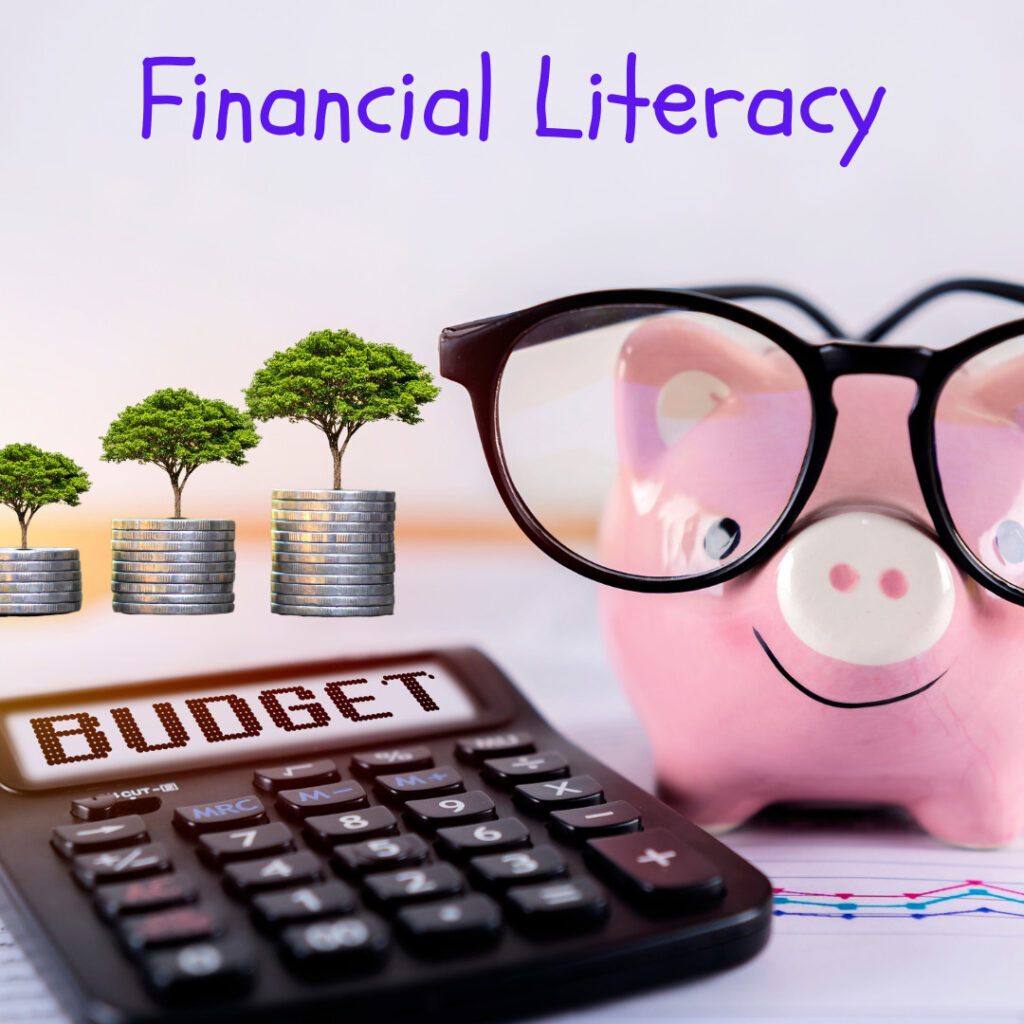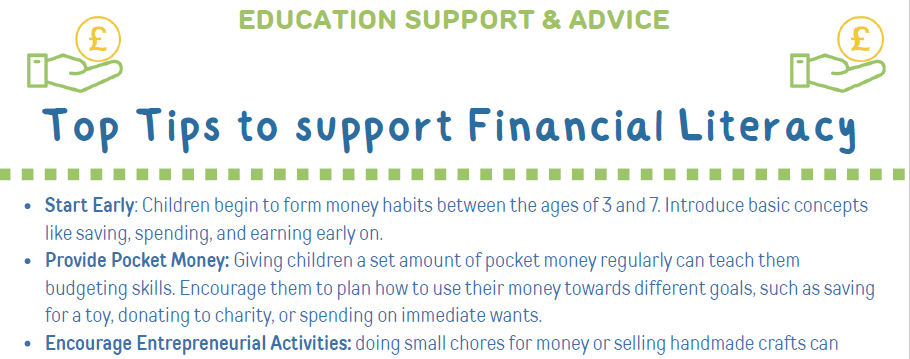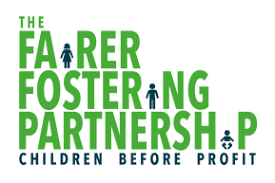Why is developing financial literacy important?

Helping children develop strong financial literacy skills from a young age can create a secure understanding of financial responsibility. The use of digital devices, online platforms, and electronic payment systems can influence children’s understanding of money and the ways to manage it. Digital payment methods may mean children have limited understanding of the value of money as they don’t handle and manage physical cash.
They are likely to encounter spending decisions online such as in-game or in-app purchases which can lead to a sense of immediate reward, making it harder for children to think about their spending decisions in a critical way or be able to distinguish between their needs and their wants.
What is financial literacy?It’s the ability to understand and use financial skills such as budgeting, saving, investing, managing debt and applying financial understanding to making decisions. Financial literacy enables young people to have a healthy relationship with money.
How can I help my child develop strong financial literacy skills?
Keep It Stage and Age -Appropriate: Younger children may benefit from simple activities like saving coins in a piggy bank or choosing different ways to spend their pocket money. Teenagers might be ready for more complex topics, like credit, loans and investing basics.
Use Real-Life Examples: Incorporate financial lessons into daily activities. For example, discuss the cost of groceries during shopping trips or explain the difference between needs and wants when making purchases.
Make learning fun: Turn financial education into games. Activities like sorting coins, playing shops, or using online financial literacy games can make learning fun and interactive.
Ages 3-7 RESOURCES
Play shops at home: collect items from around the house and decide together on the prices. Use some money (ideally real coins) and take it in turns to be the shopkeeper and the customer.
Out shopping: help children spot cheaper and more expensive versions of items and talk about wants and needs. Help them to pay for things with their pocket money and count their change.
Money Heroes – Free Young Enterprise Financial Education programme: resources to help teachers, parents and anyone supporting young people.
UK BANKS Free financial education resources for children and adults such as
NATWEST My Money Sense
Ages 7-11 RESOURCES
NATWEST free online game – Island Saver can be downloaded via IOS, Android, Steam, PlayStation, Xbox One and Nintendo Switch. Parent Guide available – click here.
My Bank: These free resources use videos, games and quizzes to help children learn about saving and mindful spending: https://learning.mybnk.org/courses/family-money-twist-years-3-6/
Ages 11+ RESOURCES
BBC Bitesize free resources including ways of paying and choosing the right phone tariff.
Money Saving Expert Martin Lewis – free money matters financial education textbook, activities and linked PowerPoint presentation.
RESOURCES FOR YOUNG PEOPLE 16+
This free online game promotes thinking about planning for the future including how to invest savings: https://raise.y-e.org.uk/
Top Tips to support Financial Literacy
- Start Early: Children begin to form money habits between the ages of 3 and 7. Introduce basic concepts like saving, spending, and earning early on.
- Provide Pocket Money: Giving children a set amount of pocket money regularly can teach them budgeting skills. Encourage them to plan how to use their money towards different goals, such as saving for a toy, donating to charity, or spending on immediate wants.
- Encourage Entrepreneurial Activities: doing small chores for money or selling handmade crafts can provide hands-on experience with budgeting, saving and reinvesting profits.
- Use Everyday Activities: Things like shopping or planning a family outing provide excellent opportunities to teach children about budgeting and spending decisions. Involve children in creating a budget for grocery shopping or a day out.
- Teach Budgeting: Help children create a budget for their pocket money or job income. Show them how to track their income and expenses, and explain the importance of setting aside money for future needs.
- Encourage Smart Spending: Help children distinguish between needs and wants. Show them how to prioritise essential expenses and plan for treats rather than impulse buying.
- Set Up a Savings Account: Set up a savings account in their name so they can see their money grow over time and understand the value of saving. Encourage regular deposits, whether from pocket money, gifts or earnings from small chores.
- Explain Debt and Interest: Teach children about the cost of debt and how interest works. Use real-life examples to show how borrowing money can lead to paying back more over time, and how compound interest can help grow savings.
- Promote Generosity: Teaching children about generosity can cultivate gratitude and a healthy relationship with money. Encourage them to donate a portion of their money to causes they care about.
- Involve Them in Financial Decisions: Involve children in family financial discussions and decisions where appropriate. This can help them understand the value of money and the importance of making informed financial choices.
- Use Visual Tools: Use visual tools like jars or envelopes for savings, charts that show spending and giving. This can make abstract concepts more tangible and easier to understand.
- Lead by Example: Children learn a lot by observing adults, so demonstrate smart money management in your own life whenever possible.
- Use Technology and Apps: lots of apps and online platforms are designed to make learning about money fun and interactive for kids. These tools often use games, quizzes and challenges to teach financial concepts. Explore resources to find appropriate options that suit your children’s interests and learning styles.










